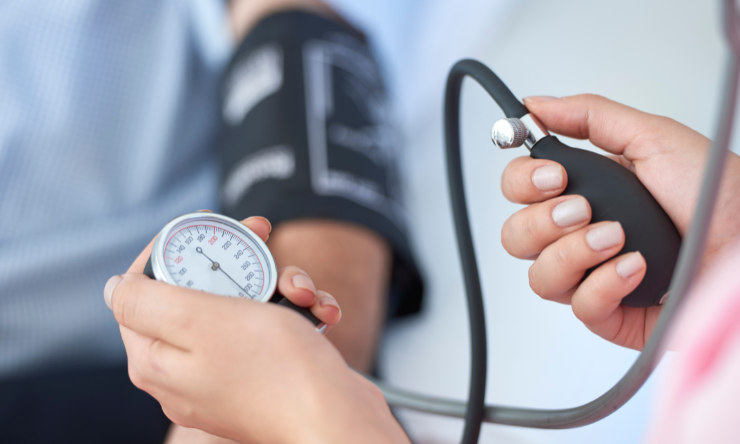Share
People who engage in moderate to vigorous physical activity may be able to significantly lower their risk of glaucoma, according to research presented at the 121st Annual Meeting of the American Academy of Ophthalmology (AAO).

Tseng et al, from the University of California, Los Angeles (UCLA) reported a 73 per cent lower incidence of glaucoma among the most physically active study participants, compared with the least active.
To examine the correlation between exercise intensity and glaucoma, the researchers reviewed survey and pedometer readings from the National Health and Nutrition Examination Survey (NHANES), a study that has tracked the health and nutritional status of over 70 million adults in the United States since the 1960s. For each 10-minute increase in moderate-to-vigorous activity per week, glaucoma risk decreased 25 per cent.1 The research suggests that exercise plays a protective role, where people who exercise at a higher intensity (speed and steps) may decrease their glaucoma risk compared to people who exercise at a lower intensity.
Elevated Intraocular Pressure
Glaucoma is the leading cause of irreversible blindness, affecting approximately 65 million people worldwide.4 Glaucoma is a group of diseases that result in a progressive optic neuropathy, characterised by optic disc cupping and corresponding visual field impairment due to retinal ganglion cell apoptosis. There is no cure and current management is aimed at slowing the progression of glaucomatous pathology through management of risk factors, primarily intraocular pressure (IOP). Other risk factors include age, family history, ethnicity, high myopia and systemic hypertension. Elevated IOP remains the most important risk factor in glaucoma and IOP reduction has been demonstrated to decrease glaucoma incidence.4
Exercise Recommendations
Exercise recommendations could potentially provide patients with a valuable modifiable risk factor for glaucoma incidence or improve self-management of disease progression. IOP lowering after exercise is widely reported in the range of 1.2 - 5.9mmHg, although its mechanisms are poorly understood.2,5,6 Several studies suggest that IOP decreases transiently with aerobic exercise in proportion to intensity and duration.5,7 Exercise training may persistently reduce IOP but these effects appear to return to baseline sometime after exercise ceases.8 Exercise may also improve blood flow to the retina and optic nerve.6
Historically, there has been debate as to whether exercise is helpful or harmful to glaucoma patients. IOP may be transiently elevated with muscle exertion, body position changes and increased respiratory volumes, especially valsalva manoeuvres. Examples include weightlifting and inverted yoga postures, which can cause transient IOP elevation by increasing intra-thoracic and abdominal pressure.8 Additionally, consuming large volumes of fluid causes a significant elevation in IOP akin to the water drinking test.9 These increases in IOP during exercise would have no adverse consequences for most people, but could contribute to new or additional glaucomatous pathological change in susceptible individuals. Hence exercise recommendations in patients with glaucoma or glaucoma suspects need to be approached with consideration. Overall however aerobic exercise is generally accepted to be beneficial in terms of ocular health.6
While an exercise regimen should be recommended and encouraged in glaucoma patients for their general health, an ophthalmologist or general physician review should always be recommended prior to starting any exercise regimen. A physiotherapist may be recommended to patients to address long term behavioural lifestyle changes and exercise goals. Currently the American College of Sports Medicine recommends at least 150 minutes of moderate intensity exercise (40-60 per cent of heart rate reserve), or 75 minutes of high intensity exercise per week (60-80 per cent), or a combination for cardiovascular fitness in healthy adults.10 Exercise and physical activity decrease the risk of developing cardiovascular disease, stroke, type 2 diabetes, some forms of cancer (e.g., colon and breast cancers), improves mild to moderate depressive disorders and anxiety and lowers the risk of cognitive decline and dementia. Exercise preserves bone mass and reduces the risk of falling,10 which are particularly important with glaucomatous vision loss in the ageing population.
Exciting Finding
The recent emergence of exercise as a potential modifiable risk factor in glaucoma is exciting, because most other glaucoma risk factors are non-modifiable or outside the patient’s control. Moderate intensity exercise appears to be safe and likely beneficial for most people,10 including glaucoma patients. Patients with glaucoma, especially normal tension, or advanced disease, may be at risk of further optic nerve injury with the pressure fluctuations of strenuous exercise, and should have a personalised exercise plan with their ophthalmologist and health care team. More research examining the relationship between exercise and glaucoma is required before specific exercise recommendations can be made. Methodological issues with quantifying and self-reporting of exercise intensity and glaucoma need to be addressed, and further investigation into the physiological causes of exercise intensity association and glaucoma risk and progression is needed.
References
1. Tseng, V., F. Yu, and A.L. Coleman, Exercise Intensity and Risk of Glaucoma in the National Health and Nutrition Examination Survey, in American Academy of Ophthalmology. 2017: New Orleans, USA.
2. Williams, P.T., Relationship of incident glaucoma versus physical activity and fitness in male runners. Med Sci Sports Exerc, 2009. 41(8): p. 1566-72.
3. Lin, S.C., et al., The relation between exercise and glaucoma in a South Korean population-based sample. PLoS One, 2017. 12(2): p. e0171441.
4. Society, A.P.G., Asia Pacific Glaucoma Guidelines. 2016, Kugler Publications: Amsterdam, The Netherlands.
5. Qureshi, I.A., The effects of mild, moderate, and severe exercise on intraocular pressure in glaucoma patients. Jpn J Physiol, 1995. 45(4): p. 561-9.
6. Wylegala, A., The Effects of Physical Exercises on Ocular Physiology: A Review. J Glaucoma, 2016. 25(10): p. e843-e849.
7. Natsis, K., et al., Aerobic exercise and intraocular pressure in normotensive and glaucoma patients. BMC Ophthalmol, 2009. 9: p. 6.
8. McMonnies, C.W., Intraocular pressure and glaucoma: Is physical exercise beneficial or a risk? J Optom, 2016. 9(3): p. 139-47.
9. Susanna, R., Jr., et al., Applications of the water drinking test in glaucoma management. Clin Exp Ophthalmol, 2017. 45(6): p. 625-631.
10. Garber, C.E., et al., American College of Sports Medicine position stand. Quantity and quality of exercise for developing and maintaining cardiorespiratory, musculoskeletal, and neuromotor fitness in apparently healthy adults: guidance for prescribing exercise. Med Sci Sports Exerc, 2011. 43(7): p. 1334-59.



